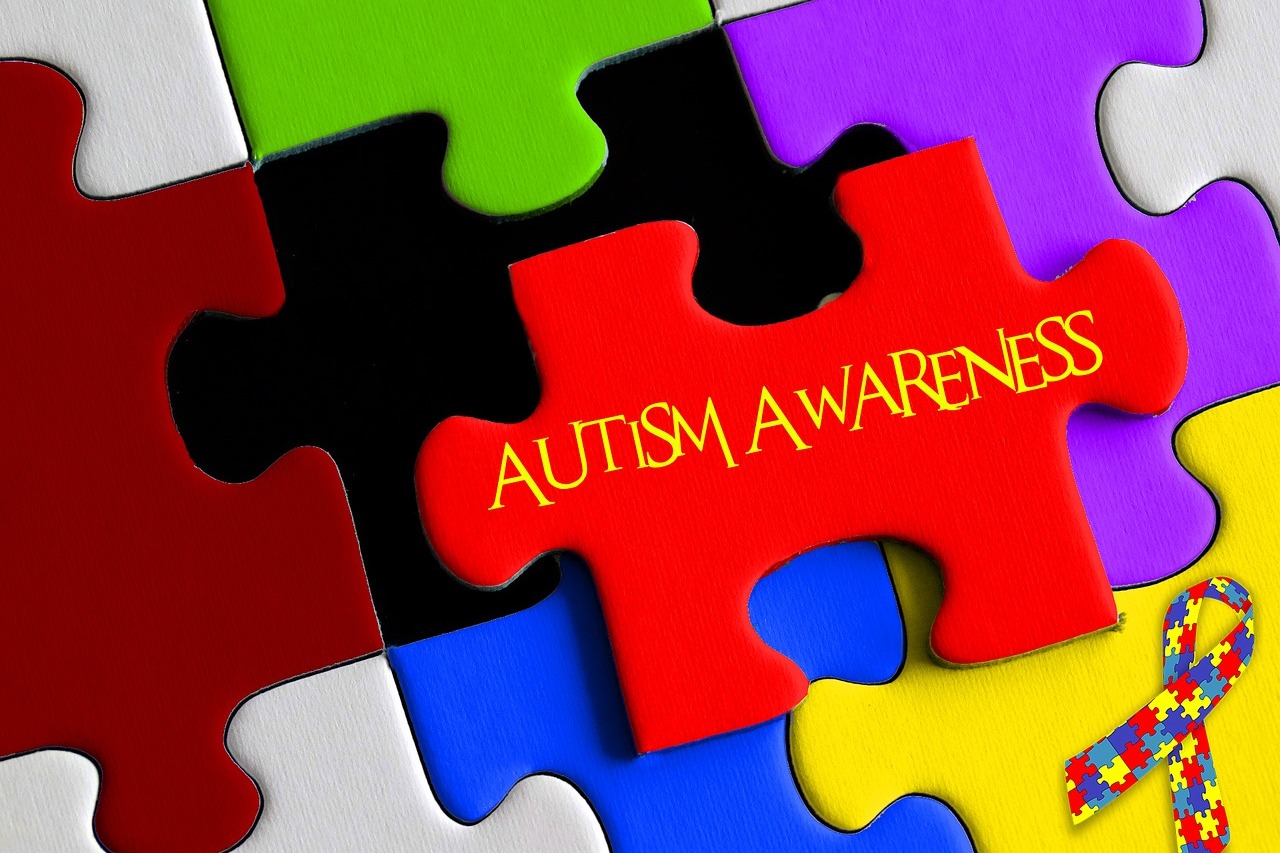What is autism? The complexity of this disease can be, in part, explained through the autism statistics exposed in this article. Autism — also named Autistic Spectrum Disorder (ASD) — is becoming ever more present in the young population. It affects cognitive capacities and the functioning of the nervous system.
Autism symptoms such as sociability and language issues, repetitive behavior, and ADHD are the first ones to be associated with this disease. However, they also include gastrointestinal problems, eating disorders, epilepsy, anxiety, and many more.
Motivated against this frightening clinical picture that makes the hairs on the back of parents’ necks stand up, researchers are doing their best to solve the puzzle named ASD and propose an effective treatment.
The Top 10 Surprising Autism Statistics and Facts
- The US had the highest rate of autism among children in 2018.
- Researchers state that symptoms of autism have reduced despite the higher ASD rates.
- One-fourth of black and Hispanic autistic children under 8 are not diagnosed.
- Men are 6 times more likely to have an autistic kid in their 40s than in their 20s.
- In some cases, children with ASD may outgrow this diagnosis.
- Autism therapy research shows a 45% reduction of ASD symptoms in patients who received Microbiota Transfer Therapy (MTT).
- In 2019, around 13% of the US population aged 30–49 believed that some vaccines could cause autism in children.
- Prenatal exposure to 6 widely used pesticides increases the risk of ASD by 10%.
- Statistics show that only 5% of adults with ASD have ever been married.
- 7–30% of people with ASD die from epilepsy seizures.
Statistics on the Prevalence of Autism
1. Researchers find that autism-specific symptoms are diminishing, despite higher ASD rates.
(Science Daily)
Even though the incidence of ASD increased 40-fold in the US in the last 50 years, scientists claim that autism symptoms are becoming milder over the years compared to the non-ASD population.
Data gathered since 1966, which describes autism symptoms, concluded that there is a 45–80% dilution in the differences between autistic and non-autistic individuals, excluding inhibition and cognitive flexibility. Consequently, researchers claim that if this trend continues, the differences between autistic and non-autistic individuals will be insignificant in 10 years.
2. Autism statistics worldwide show that 1 in every 160 children had ASD in 2019.
(WHO, Statista)
Based on the WHO data, one in 160 children had an autism spectrum disorder in 2019. Today, one in 59 children in the US have ASD. In the period between 2017–2018, around 710,000 minors aged 3–21 that have autism were enrolled in special education programs. Physicians and psychiatrists recognize multiple types of autism that are part of the so-called autism spectrum and contribute to the numbers of ASD incidence.
3. According to autism statistics worldwide, the US had the highest rate of autism among children in 2018.
(Statista)
Statistical data for 2018 shows that, in that year, 168 per 10,000 children in the US were diagnosed with autism. The worldwide data shows that the US was the global leader for cases of childhood autism, followed by Japan, where 161 out of 10,000 children were autistic.
Other countries with high rates of ASD in children include Canada, the UK, and Denmark (152, 100, 100, and 69 per 10,000, respectively). Statistically speaking, the region of the Americas had the highest number of childhood autism cases in 2018.
4. Autism statistics by state reveal that, in 2019, New Jersey had the highest prevalence of childhood autism in the US.
(Independent, Statista)
Following the 2019 data from Rutgers University, New Jersey had the biggest number of preschool children diagnosed with ASD. While the US national average for that year was 13 per 1000 diagnosed cases, in New Jersey, it was more than double (28 cases per 1000). In 2019, one in 23 four-year-old boys were diagnosed with autism. This coincides with the 2014–2016 data, which shows a 3% incidence of childhood autism in the Northeast region.
5. Autism rates by year in the US are increasing twice as fast in racial minorities as in the white population.
(Science Daily)
The University of Colorado Boulder study found that ASD diagnosis is twice as frequent in US racial minorities than in the white population. The results expose a staggering 73% increase in autism among 3- to 5-year-old Hispanics born between 2007–2013. In comparison, the black population of the same age reached a 44% increase for the same period. The white population of the same age, even though historically more frequently diagnosed, had a 25% increase in autism cases in that period.
6. Asperger’s statistics show a prevalence of 1 in every 250 children.
(AANE)
The signs and symptoms of Asperger’s have become more recognizable over the years. Many believe this is why the estimated incidence of this type of ASD is 50% higher than the previous estimations, which were made in the late 1990s (one in every 500 children). According to the Asperger/Autism Network (AANE), there is reason to believe that half of the children with Asperger’s are undiagnosed because of the mild symptoms that enable them to adapt socially to a certain level.
7. The prevalence of autism spectrum disorder symptoms is higher among scientists, engineers, and mathematicians.
(ABAA Edu, NCBI)
Studies show that, at a very early age, an autistic child is more likely to be seen playing with objects than other children. MRI studies concluded that the brain regions that deal with social interactions and repetitive behaviors, in highly functional autistics, are repurposed to deal with other intellectual tasks. In 2015, Cambridge University data revealed that people working in mathematics, science, technology, and engineering have higher rates of developing autistic traits than people in other professions.
8. Autism rates by country show that the ASD incidence in the EU has a male to female ratio of 3:1.
(Autism Europe)
The latest report shows that there is one female patient for every three male patients diagnosed with ASD in Europe. And according to the statistical data, the gender gap concerning ASD patients tends to become more narrow every year. This is also the case in the United States, where the gender ratio is four male to every one female autistic patient. The US data statistics from 2014 concluded that as much as 75% of all autism cases were male.
9. Autism statistics in New York State confirm that nearly 40,100 minors aged 1–21 are receiving special education programs for ASD.
(NYSED)
As of October 2017, there are 40,090 ASD children between the ages of one and 21 who use special education programs in New York State, with the total percentage being 8.6%. This data has been available since 1966, so one can easily compare it with the numbers from just a few years back and get devastated by the rapidly increasing rate.
For comparison, in 2007, there were 17,599 autistic minors, while in 1966, there were only 3,416 minors with autism. This increase is most likely due to better autism awareness diagnostic methods we have today.
Autism Statistics Regarding the Diagnosis and Treatment
10. The total cost of ASD disorders will reach $461 billion in the US by 2025.
(Statista, Link Springer)
Statistical data shows that the cost of ASD disorders in the US was $268 billion in 2015, but that number will almost double by 2025. For children, the biggest share of the total cost is specialized educational services. For adults, the biggest share of the cost is supported living accommodation arrangements.
11. According to European ASD statistics, the median time from suspicion to diagnosis in children was 19 months in 2018.
(ASDEU, Statista)
A 2018 European research encompassing 23 EU regions and more than 60,000 children concluded that the average age at which the first ASD suspicions were made was around the second year of life (25.3 months).
However, the median time of ASD diagnosis was made around one and a half years later, or 19 months after the first suspicions. In the US, the ASD diagnosis was made, on average, in the first 43 to 64 months.
12. Autism statistics by year show that criteria for the diagnostics of autism increased the ASD incidence by 4% in the US before 2013.
(Autism Speaks)
The latest CDC report on autism prevalence exposes the observations made for the diagnostic criteria known as DSM-IV, in comparison with the newest criteria, also known as DSM-5 criteria, which was adopted in 2013.
The employment of the two methods showed a 4% difference in the results, in the same way as the older method showed a higher percentage of ASD incidence. Hence, today, the national incidence of ASD is considered to be one in every 59 children.
13. When it comes to autism by race, statistics reveal that one-fourth of black and Hispanic autistic children under 8 are undiagnosed.
(Science Daily)
A study published in the journal Autism Research concluded that, in 2014, one-fourth of the children under eight were not diagnosed with ASD, despite their positive criteria for autism.
Most of these underdiagnosed children were male black or Hispanic children with cognitive difficulties, poor social skills, and troubles in daily activities.
Out of the revised 266,000 medical records, a staggering 25% of cases were disregarded, and this is why a generalized screening for ASD is indispensable.
14. Autism diagnosis statistics reveal that, in some cases, children can outgrow the diagnosis.
(Science Daily)
The analysis of clinical records of 569 patients diagnosed with ASD between 2003 and 2013 revealed that, after a follow-up, 38 of these children no longer met the criteria for ASD.
However, almost all of them displayed symptoms of other behavioral problems such as ADHD, oppositional defiant disorder, or disruptive behavior disorder. 24% had internalizing behavior problems such as anxiety, OCD, or selective mutism.
Only 8% of those who no longer met the criteria for ASD didn’t present any symptoms of a similar disorder.
15. New autism facts show a 45% reduction of ASD symptoms in patients who received Microbiota Transfer Therapy (MTT).
(Science Daily)
In a recent study published by Arizona State University, scientists show the promising results they obtained by oral treatment of autistic children with gut microbiota.
In contrast to other existing treatments aimed at symptom management, the Microbiota Transfer Therapy (MTT) has direct therapeutic effects since researchers are now aware of the link between gut microbiota diversity and the neurochemical balance.
A two-year follow-up evaluation revealed that the main autism symptoms were reduced by 45% after patients received three months of MTT therapy.
16. Autism stats in 2018 showed that 67% of autistic patients made use of speech therapy.
(Link Springer, NCBI)
According to statistical data for the region of North America, in 2018, there was an increased interest in the use of treatment services for ASD patients.
Parents of ASD children reported using speech therapy in 67% of the cases, making it the most solicited form of special service. 50% reported using occupational therapy, and 28% solicited behavioral therapies. In 2014, 76% of the children with ASD used special educational services, which resulted in an additional $8610 increase in the average educational costs.
Risk Factors for Autism: Key Statistics and Research
17. Prenatal exposure to 6 widely used pesticides increases the risk of ASD by 10%.
(J Watch)
Animal-based studies allowed scientists to identify 11 pesticides that are toxic to the neurological development of mammals. These studies motivated the collection and analysis of ASD diagnoses in California and the corresponding data on the geographical use of pesticides.
The cross-analysis of 2961 Californian ASD cases near the pesticide-use regions and 35,370 sex- and birth-year-matched controls showed a 10% elevated risk of autism in children with prenatal exposure to six of the 11 types of pesticides that were analyzed.
18. New research shows that autism prevalence can be explained with spontaneous DNA mutations.
(Science Daily)
A study published in 2019 showed that autism could be the result of non-hereditary gene modifications that occur spontaneously in the DNA parts that are not used for protein synthesis (also known as “junk DNA”).
The study involving AI analysis of the whole genomes of 1,790 individuals with ASD without an autistic parent showed the presence of mutations in specific regions of the DNA. These kinds of irregularities in the DNA were found to cause 30% of autism cases where there was no history of the disease.
19. Identical twin research on the autism rates in 2019 shows that early-life environmental factors play an important role in symptom manifestation in 73% of the ASD cases.
(Autism Speaks)
A 2019 study published in Behavior Genetics shows statistically important differences between severities of ASD symptoms in pairs of identical twins. Namely, it was found that 73% of the identical twins clinically diagnosed with autism obtained statistically different scores for social behavior.
These findings led the scientists to believe that environmental factors were in the origin of differences in the severity of autistic social behavior. Follow-ups confirmed the hypothesis that the environment has a strong impact on ASD, from birth until four years of age.
20. Facts about the autism spectrum disorder show that men are 6 times more likely to have an autistic kid in their 40s than in their 20s.
(Spectrum News)
Data on 132, 000 Israeli subjects shows that men in their 30s have a 1.6 times higher chance of having an ASD child than fathers who are in their 20s.
The same study showed that men in their 40s have a six times higher chance of fathering an autistic child. The conclusions were confirmed by an international study that involved 5.7 million children.
21. Autism statistics from 2019 reveal that 13% of the US population aged 30–49 believes that some vaccines can cause autism in children.
(Statista)
A telephone survey revealed that, in 2019, around 13% of the Americans aged 30–49 were convinced that some vaccines could cause autism in children.
Among 1.025 correspondents, this age group was the most skeptical about the harmfulness of vaccines, followed by those aged 18–29.
At the same time, as much as 55% of the US population aged 55–64 were not sure if the vaccines are safe.
Autism Facts and Statistics
22. As much as 28% of autistic people spent 5 years or more in mental health institutions in the UK.
(Autism UK, Brown University)
Statistics show that one in four people diagnosed with ASD spent five years or more in a mental health hospital in the UK.
Four out of 10 of those admitted to these institutions are autistic individuals younger than 25.
The strongest indicator of the risk factor of hospitalization among ASD individuals is the presence of a mood disorder.
This comorbidity leads to seven times higher chance of hospitalization of these patients at some point in their life.
23. Autism spectrum statistics show that almost 19% of ASD diagnosed individuals need constant help with personal care.
(Statista, NCBI)
In 2014, 18.9% of ASD children within the ages of three to 17 years were not able to carry out personal care independently but needed help from another person.
A study involving 169 middle-aged ASD individuals diagnosed in the 70s and 80s found that 46% required high levels of help in most of the areas of independent living.
This is why the vast majority lived with their families. Only 20% of these individuals have reached a satisfactory level of independence.
24. Autism statistics show that around 44% of children identified with ASD have an intellectual ability that is average or above average.
(CDC)
The ADDM Network conducted a study on the intellectual ability of ASD children that were eight years old across nine US geographical sites in 2014.
The study found that almost a third of those diagnosed with autism had an intellectual disability, which was manifested by an IQ over 70; 25% of them had borderline IQ (71–85 IQ points); and 44% of them had an average or above-average IQ scores.
According to the Center for Autism Research, roughly 40% of those with ASD have an intellectual disability.
25. When it comes to autism and marriage, statistics reveal that only 5% of ASD adults have ever been married.
(NCBI)
A 2018 study of the social outcomes of ASD individuals shows a devastating number in terms of independence of autistic individuals with a median age of 35.5.
Roughly 46% of them needed assistance in everyday life, and 20% were unemployed.
The majority of caregivers said that their adult autistic child had no interest in having a romantic relationship or was not able to make them last.
Nearly 75% of the participants have never dated anyone, and only 5% were married.
26. Statistics show that 4 in 5 people that have autism have at least one chronic sleeping disorder.
(Autism Speaks)
Genetic studies show that autism and sleep issues go hand-in-hand, with ASD individuals having higher than average incidence of genetic mutations in the genes that regulate the sleep-wake cycle.
This results in sleep disturbances, such as difficulty falling asleep, frequent waking, and extremely early rising.
Some attribute these difficulties to the lower levels of melatonin, the so-called sleep hormone. Research shows that children with autism spend just 15% of their sleeping time in REM sleep.
27. Facts about autism show that 30–61% of people with autism are also suffering from ADHD.
(Science Direct, Autism Speaks)
Just 6–7% of the general population is affected by attention deficit hyperactivity disorder (ADHD), in comparison to roughly 50% of autistic children.
Furthermore, 11–42% of those with autism have one or more anxiety disorders. Other psychiatric comorbidities include OCD, eating disorders, and self and hetero-aggressiveness.
A study that evaluated the different methods of diagnostics found that those who qualified for the new diagnostic criteria (DSM-5) for ASD had more severe autism symptoms.
28. Autism spectrum disorder statistics show that 7–30% of ASD people die from epilepsy attacks.
(Autism Speaks)
Autistic patients have bigger chances of developing epilepsy. While 1–2% of the general population is affected by epilepsy, the incidence rate is staggeringly high for ASD people and ranges from 20–33%.
This co-occurrence is particularly evident in autistics that present symptoms of intellectual disability (IQ < 70).
A 2012 meta-analysis review of 21 studies showed that epilepsy is very dangerous for people with ASD, mostly because seizure symptoms are not easily recognizable, and because people with autism have difficulty communicating their symptoms.
29. When it comes to autism and employment, statistics show that around 50–86% of ASD individuals were unemployed or underemployed in 2015.
(IOS Press)
A study involving 254 adults with ASD showed that 38.58% of them were unemployed. However, the actual national rate of unemployment for ASD people is estimated at over 50%.
This is significantly higher than the national unemployment rate, which was 5% in November 2015.
Furthermore, 30% of the unemployed stated that they were unable to find a job, while 16% didn’t work due to illness and sustained injuries. Moreover, 13% of them quit, 21.43% got fired, and 16.33% were laid off.
30. Autism statistics from 2018 indicate that, on average, 207,771 disability-adjusted life years were lost due to ASD.
(ASDEU)
An estimated 122 per 10,000 children in Europe are affected by ASD. Males accounted for 153,153 DALYs (disability-adjusted life years), while females accounted for 54,618 life years lost in 14 EU countries in 2018.
The European research, encompassing more than 630,000 children, showed that the type of ASD and the age and the degree of intellectual disability are the biggest predictors of the DALYs lost due to ASD.
FAQ
How common is autism?
Autism Spectrum Disorder (ASD), which encompasses different levels of autism, is very common. The World Health Organization (WHO) estimates that one in every 160 children has ASD.
There’s a significant difference in the autism prevalence between genders, as boys are approximately four times more likely to be diagnosed with ASD. Autism in girls manifests with milder symptoms, so some of the cases go undiagnosed.
How many people have autism in the US?
Statistical data for the years 2017 and 2018 shows that around 710,000 children aged three to 21 are diagnosed with ASD.
The exact numbers of the adult ASD population aren’t known, but statistics show that one in every 59 children is autistic in the US.
What countries have the highest autism rates?
The incidence of autism varies across countries and regions, but it’s more common in Western countries, according to recent data.
This number could be the result of having higher autism awareness. The US has the biggest worldwide autism prevalence in children, where it is estimated that one in 59 newborns have ASD. Other countries with high prevalence are Japan, Canada, Ireland, and Denmark.
Is autism hereditary?
Although the exact causes of autism are not yet known, it is believed that hereditary factors can increase the risk of developing ASD in children.
Other spontaneous genetic mutations that are not hereditary can also be linked to autism. Scientists have proven that the risks involved with having an autistic child increase with age, as well as the exposure to air and soil pollutants such as pesticides.
Why is autism increasing?
There are many reasons behind the increasing number of ASD diagnoses in children. First, the diagnosis of what is considered autism is changing, and it does not include only the most severe autism cases, but also the types of autism which have milder autism symptoms.
Second, the environmental factor, or more precisely, the exposure of parents and children in the prenatal and early postnatal period to environmental toxins such as pesticides, negatively affect neurodevelopment. Having access to organic food is of the essence, as consuming chemically treated products can also elevate the risk of autism.
Finally, these autism statistics can be the result of increased autism awareness. This means that more attention and effort are being put into spotting autistic behavior and making an early diagnosis, which is crucial for reaching a more effective autism treatment.
Conclusion
The present tactics for dealing with autism symptoms, including the use of pharmaceuticals, will continue to evolve. Scientists are working around the clock to find solutions, while ASD continues to influence the lives of patients and their families. However, these autism statistics show that there is a solid base for hope, such as the MTT, and perhaps other treatments that will enable us to eventually find a way to help those who have ASD.
Sources:
- AANE
- ABAA Edu
- ASDEU
- Autism Europe
- Autism Speaks
- Autism Speaks
- Autism Speaks
- Autism UK
- Brown University
- CDC
- Independent
- IOS Press
- J Watch
- Link Springer
- NCBI
- NCBI
- NYSED
- Science Daily
- Science Daily
- Science Daily
- Science Daily
- Science Daily
- Science Daily
- Science Direct
- Spectrum News
- Statista
- Statista
- Statista
- Statista
- Statista
- Statista
- Statista
- WHO



